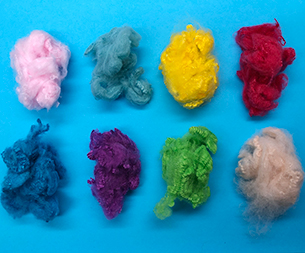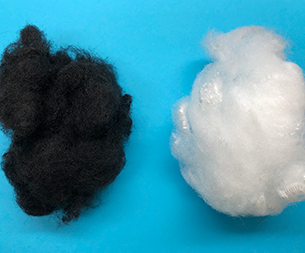Recently, the archeology of Sanxingdui, which has received much attention, has been "new" again. After many years, the mysterious Sanxingdui has released the latest archeological excavation results with the site, and once again opened the mysterious veil of the ancient Shu civilization!
The Sichuan Provincial Institute of Cultural Relics and Archeology recently announced the latest archeological results of the Sanxingdui site in Guanghan City, Sichuan. In addition to a large number of bronze, jade, gold, ivory, etc., archeologists also found silk in Sanxingdui "sacrifice pit". There is no gap in the summer and business period in the southwestern region.
1 Find silk in invisible
"The ancient Shu civilization represented by Sanxingdui is not only an important origin and component of Chinese civilization, but also one of the most distinctive regional culture in the ancient Chinese civilization community. In the process of Chinese civilization integration, silk is a very significant convergence Factors. Whether it is the myth, legends, historical records, or archeological discoveries, Both Bashu and Central Plains have adhered to the roughly the same knowledge system and value system. "Said Zhou Yan, deputy director of the China Silk Museum.
The Sanxingdui site was first discovered in 1929. In 1986, there were 1,720 precious cultural relics such as gold rods, masks, god trees, and ivory carvings unearthed in 1986. So far, the number of bronze, jade, goldenware, pottery and ivory unearthed from Samsung Dou has exceeded 50,000 pieces.
Ran Honglin, director of the Sanxingdui Institute of Archeology, Sichuan Provincial Institute of Cultural Relics and Archeology, introduced that after thousands of years of burial, Sanxingdui has no longer the "face value" of the year, but archaeologists found silk in multiple "sacrifice pits". Some are attached to the unearthed cultural relics such as bronze wares, and some are "hidden" in the ashes.
Zhou Yan, who participated in the excavation, protection and research work of Sanxingdui silk fabrics, said that the No. 4 "sacrifice pit" piled up 15 cm ashes layer. Through analysis and detection, a strong silk protein signal can be detected at different levels. This It is the brocade ash left after burning the silk. Such a thick brocade gray can see the richness of the ancient Shu Kingdom.
2 Silk is a substance that cannot be ignored
After "thorough investigation", Zhou Yan's team found silk on the bronze snakes, bronze -shaped wares, and more than 40 utensils of Sanxingdui. "In addition to thick silk, there are also elegant and light silk, which can be imagined as elegant and agile like a gauze." Zhou Yan said.
"There are a large number of bronze blocks in the Sanxingdui warehouse. These bronze pieces have been obviously burned, and silk is found on this block. This is a very obvious silk, which is very clear. At that time, this silk was very thick and bright in color. "Zhou Yan said.
The discovery of silk is the result of multi -disciplinary cross -study and the extraction protection of cultural relics microbes information. Zhou Yan found oblique fabrics in a very hidden corner of the back of a bronze ware on the 2nd "sacrifice pit". This is the most common and the longest woven skills for humans.
Zhou Yan believes that the restoration of the society at that time, silk is a substance that cannot be ignored. The discovery of silk can definitely provide people with more information, understand how the ancient Shu ancestors express religion and how to think about the universe.
"The ancient Shu civilization represented by Sanxingdui and Sands is not only an important origin and component of Chinese civilization, but also one of the most distinctive regional culture in the ancient Chinese civilization community. It is found that Both Bashu and Central Plains have adhered to roughly the same knowledge system and value system. "Zhou Yan said.
3 Get a glimpse of the original appearance of Gu Shu silk clothing
The Chinese civilization has formed a diverse and magnificent pattern very early. In the process of integration, silk is a very significant convergence element. So, what exactly is silk clothing in ancient Shu civilization?
On June 14, CCTV News Channel "New Discovery of Sanxingdui" was launched, and for the first time during the live broadcast, high -level immersive digital interaction space "Sanxingdui Fantasy Tour". In this journey through time and space, the teacher -student design team led by Associate Professor Shen Fei of the School of Clothing Art and Engineering of Beijing Academy of Fashion and the digital technology team collaborated to complete the costume recovery project of the ancient Shu Kingdom's sacrifice scene.
The design team focuses on the in -depth research on the unearthed cultural relics, image materials, and historical materials of the literature. Clothing structure and clothing pattern; combined with the literature, in -depth inspection of the historical culture of Sanxingdui, and the characteristics of unearthed people and clothing, and study the characters and clothing types, clothing structure, clothing materials, embroidery crafts, pattern patterns, color applications, etc. Exploration, design the costumes of the ancient Shu nation sacrifice, the patriarch and the tribe leader of the tribe leader.
These ancient Shu nationalities and clothing structures vividly reappeared through digital technology composite tools made people really feel the texture and exquisite embroidery technology of silk facial facial facial facial facial materials more than 3,000 years ago.
4 Textiles confirm the five thousand years of civilization of China
The source of Chinese civilization is long, and silk civilization is an important material and cultural symbol of Chinese civilization. The many silk products found in the archeological excavations of the past in my country have become a powerful confirmation of Chinese civilization.
Over half of the silkworm cocoons were found in Xiyin Village, Xia County, Yuncheng City, Shanxi Province, there were clear traces of a stone knife or bone knife. Since 1926, this archeological discovery is still considered to be the physical evidence of the Silk origin of the Central Plains region in the Neolithic era, 6000 to 4,000 years ago.
In the cultural relics unearthed in Wanggou site in Liyang City, Henan Province, mulberry silk residues were detected, indicating that the fabric is silk. It is confirmed that this is the earliest silk product found in the world at present, 5300 to 5500 years. The fabric in the "Robin satin" in the unearthed slices, and after dyeing, a more complex twisted structure is adopted in the weaving method. In order to prevent color loss, the ancients were removed from the dyed Luo Luo. After the silk was removed, it was called cooked silk. This Luo was also the earliest cooked silk silk product found in the world at present. According to the expert's determination, China's silk technology at that time had matured, not initially.
In Zhejiang Wuxing Qian Qianliang Liangzhu Cultural Site, which is about 4700 years ago, it has discovered the earliest silk fabrics in my country, including silk slices, flat weaving silk fabrics, ribbons and silk threads. The line is twisted by more than a dozen home. Use flat woven method to interweave. Faculty and wefts are 53:48 per centimeter. It is confirmed with fabrics, and the physical objects of spinning weaving are also found.
Zhao Feng, the curator of the China Silk Museum, said: "We often say that linen originated in ancient Egypt, wool originated in Babylon, cotton originated from India, and silk originated from China. Exploring the source of Chinese silk has always been an important issue for archaeologists. . This is also of great significance to inherit the 5000 years of civilization in China. "
- Polypropylene staple fiber is wi
- How to better exert the power of
- The characteristics of all aspec
- Internet technology changes cons
- Polypropylene staple fiber proce
- The traditional peak season has
- The performance advantages of Hy
- Operation analysis of China's in
- What factors are Polypropylene s
- From January to August this year
- Markets
- Automotive Products
- Nonwoven Lining
- Geosynthetics
- Liquid Filtration
- Apparel and Textiles
- Hygiene Products
- Building and Construction
- Other Markets
- Contact Us
- Contact Haibang





